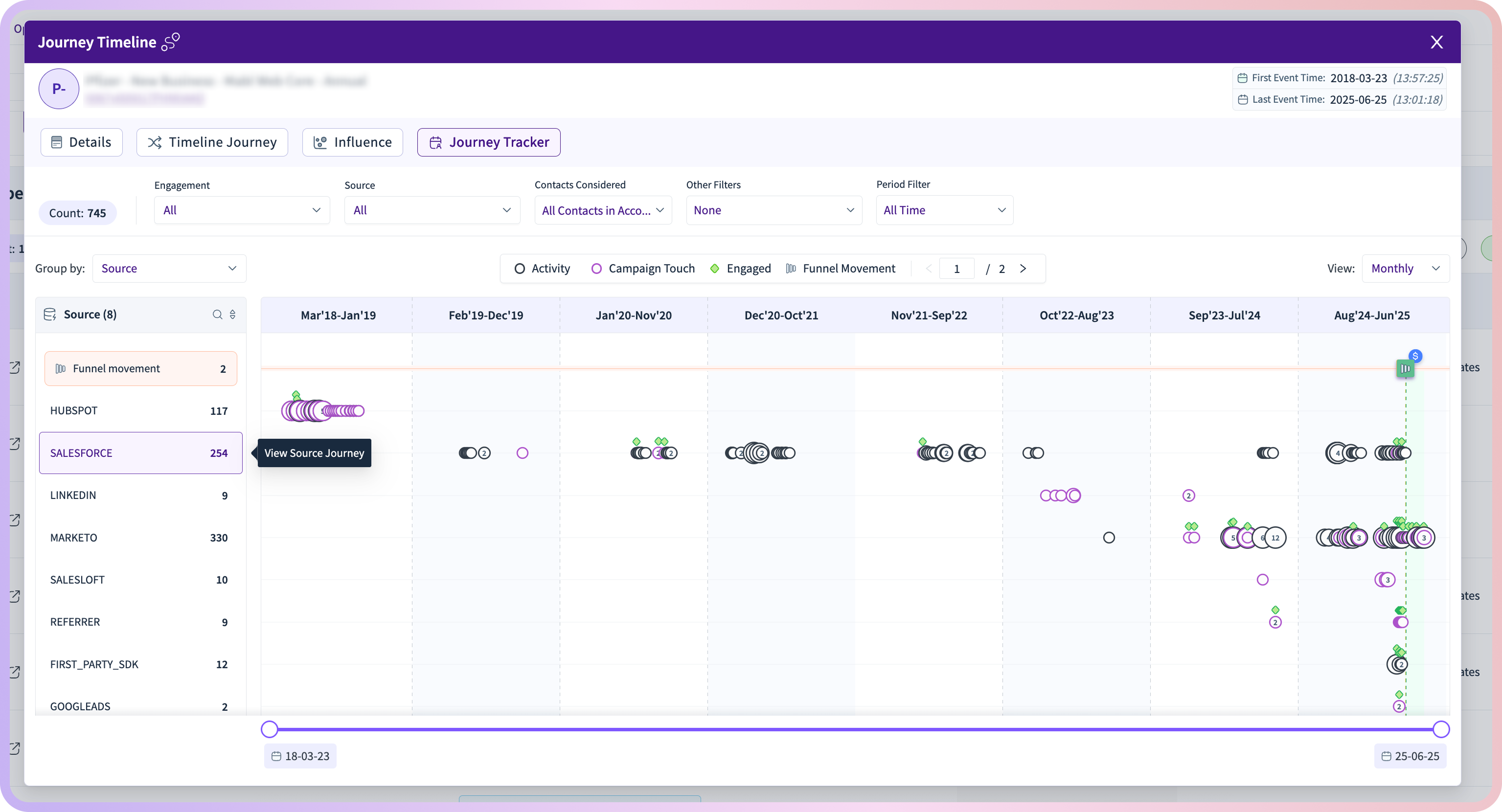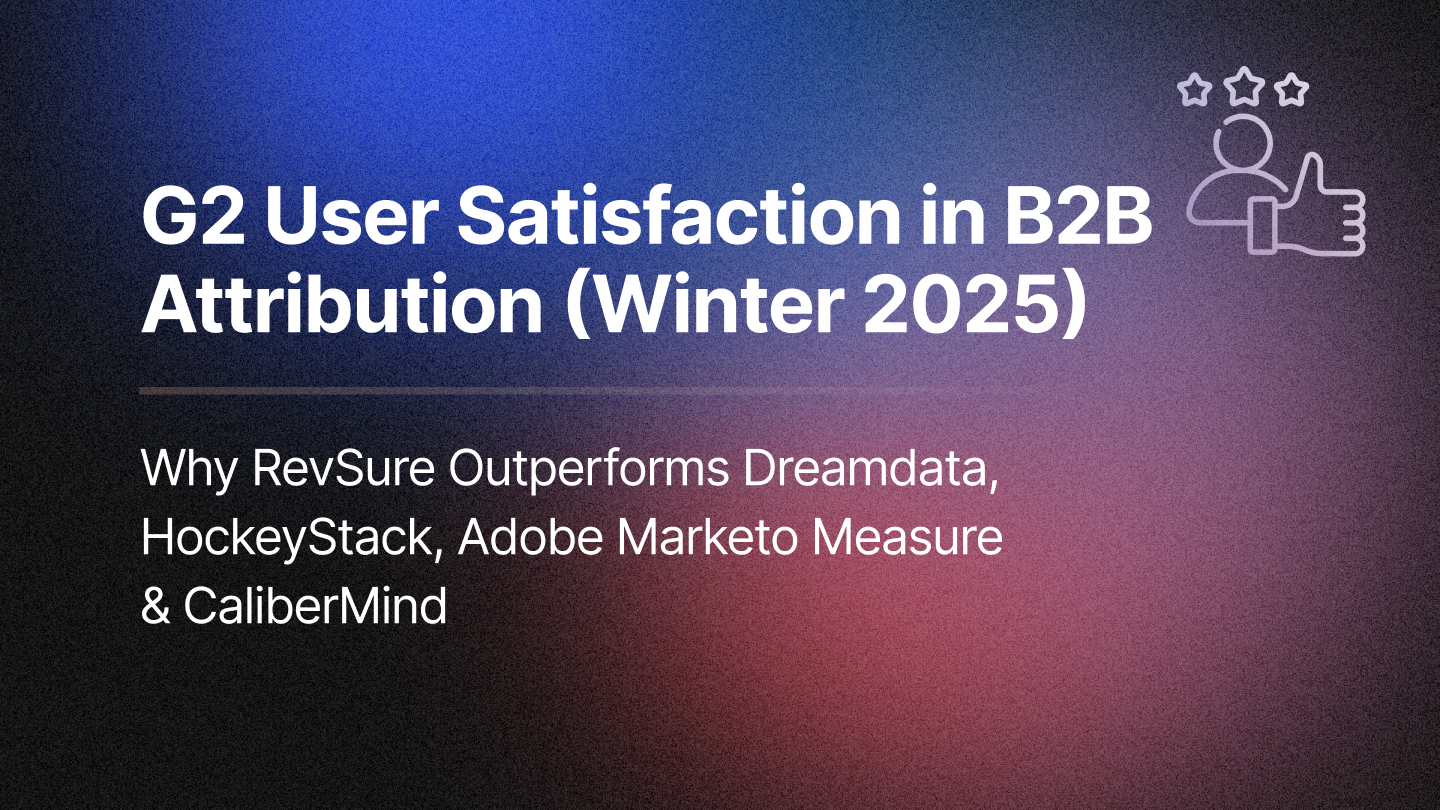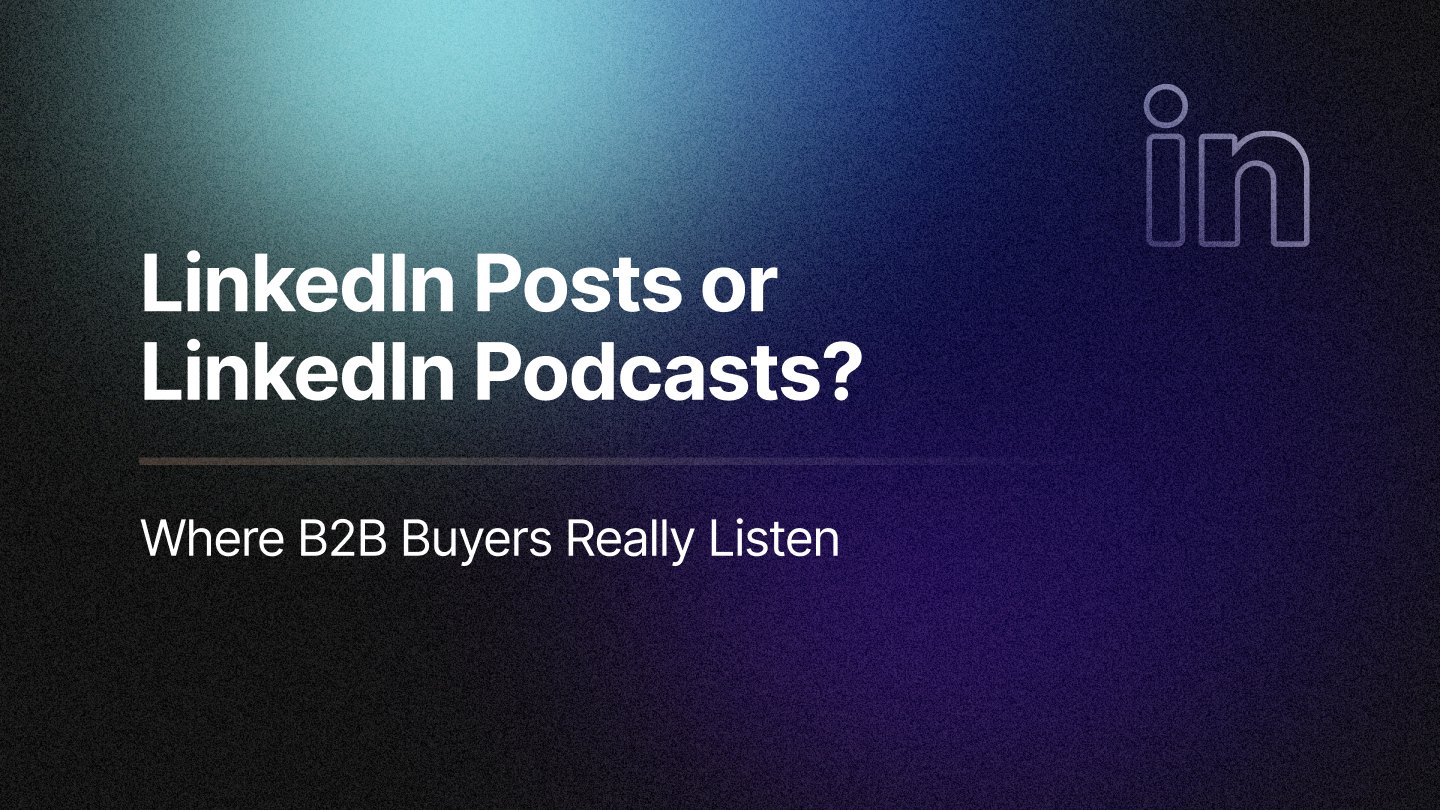If you're still using a static buyer journey map built around funnel stages like “TOFU,” “MOFU,” and “BOFU,” you’re missing the point and the pipeline. In most B2B go-to-market organizations, buyer journey mapping is treated as an annual planning exercise. Someone draws a funnel. A few personas are added. Content is mapped against stages. And then… nothing. It rarely evolves with real buyer behavior, and it almost never gets operationalized across the GTM engine.
Meanwhile, buyers are doing their own thing. They switch channels mid-cycle. They engage anonymously. They influence deals from the shadows. And they involve more stakeholders than most CRM records can capture. What’s broken isn’t the idea of mapping the journey; it’s how most teams go about it.
Where Traditional Buyer Journey Mapping Falls Short
There’s often a gap between how buyers actually behave and how GTM teams model that behavior. That gap widens when marketing, sales, and RevOps operate off disconnected views. Three common issues show up again and again:
- Outdated assumptions: Most journey maps assume buyers move in linear stages. They don’t. Buying journeys are messy, non-sequential, and involve a mix of digital and human touchpoints that don’t fit neatly into a funnel diagram.
- Lack of live behavioral data: Traditional maps are built from CRM fields or survey data, not from real signals like web engagement, ad clicks, or product usage. Without behavior-driven inputs, you're mapping intention, not action.
- No integration into execution layers: Even beautifully designed maps are useless if they don’t inform nurture tracks, SDR outreach, or pipeline forecasts. GTM teams need systems that respond to buyer movement, not just illustrate it.
To address these gaps, the next generation of buyer journey mapping needs to be dynamic, data-rich, and directly tied to activation.
Moving from Mapping to Intelligence
Modern revenue teams are no longer asking, “What stage is this buyer in?” They’re asking, “What should we do right now, based on their latest signal?”
That shift requires journey mapping to evolve from static documentation to real-time intelligence. Instead of tracking linear progress, GTM leaders need visibility into what’s happening across the funnel, from anonymous web visits to post-sale engagement, and the tools to act on it instantly.
RevSure helps make that shift possible. It’s not just about visibility. It’s about stitching buyer behavior together across teams, channels, and time, then surfacing the most relevant insights at every stage.
Let’s break that down.
The Four Stages That Actually Matter (and What They Reveal)
RevSure provides full-funnel visibility into the buyer journey by focusing on real behavior. These are the four stages that matter most to modern GTM teams:
- Discovery: This is where accounts first show intent. It could be a pricing page visit, blog view, or third-party research spike. Most of this activity happens anonymously, which is why RevSure's ability to detect and stitch early signals back to accounts is so critical.
- Engagement: Known users begin interacting—downloading assets, registering for webinars, replying to outbound. These touchpoints are captured in real time and connected across individuals and personas within the buying group.
- Evaluation: This is where pipeline formally begins, opportunities are created, demos are requested, trials begin. RevSure enriches this phase with funnel velocity and scoring intelligence, helping identify which deals are moving as expected and which ones are likely to stall.
- Decision and Post-Sale: Closing isn’t the end. It’s the start of retention and expansion. RevSure continues tracking activity across onboarding, product usage, NPS surveys, and renewal triggers, ensuring the journey never drops off at “Closed-Won.”
The power lies in how these stages are connected. Instead of isolated snapshots, you get a unified narrative: who engaged, how often, through which channels, and what happened next.
Why Your Stack Isn’t Giving You This View
Most GTM stacks are built from tools that weren’t designed to speak to each other. You might have GA4 for web analytics, Salesforce for CRM, Marketo for email, and maybe a few intent or enrichment layers on top. Even with all of that, most teams are still guessing. They're looking at dashboards, not journeys. Data is siloed, updates are lagging, and insights are spread across too many systems to act quickly.
RevSure changes that by consolidating signals and stitching them into one coherent view of the buyer. Instead of juggling exports and spreadsheets, teams work from a single source of truth, one that updates dynamically and ties directly into activation platforms.

So when a target account hits a behavioral threshold, your SDRs don’t find out a week later; they’re alerted instantly. When a buying group goes cold, marketing knows who to re-engage and how. And when pipeline starts leaking, you’re not reverse-engineering the why. You’re seeing it unfold.
From Visibility to Action: What GTM Looks Like With RevSure
Imagine this: A buyer from your top ICP reads three blog posts on your site. A few days later, someone from the same company registers for a webinar. RevSure automatically links these interactions, scores the account, and notifies your outbound team to act.
Or a trial account goes quiet after two days. RevSure flags it, checks historical patterns, and recommends a mid-funnel nurture campaign before the deal slips away.
This isn’t abstract marketing theory. It’s how modern GTM teams are operating with RevSure acting as the intelligence layer that makes every signal actionable.
A Better Approach to Buyer Journey Mapping
If you're revisiting your buyer journey model, here’s what to prioritize:
- Use first-party behavioral data as the foundation, not stages or personas alone
- Map at the account level, not just individual leads
- Connect each stage to a next-best-action, not just a visual
- Instrument your systems to respond to behavior in real time
- Include post-sale activity to support lifecycle revenue
With RevSure, organizations can do all of this with less complexity and greater confidence.
Start Orchestrating Journeys with RevSure
B2B buyers are moving faster, acting more independently, and involving more voices in every deal. Journey mapping isn’t going away, but it needs to evolve from a documentation task to an execution framework.
RevSure gives GTM teams the data, visibility, and orchestration power to make that happen. The result is a buyer journey that’s not just mapped, but measured, understood, and improved every day.
Ready to operationalize your buyer journey?
Book a demo to see how RevSure turns signals into strategy, and strategy into revenue.
Related Blogs







